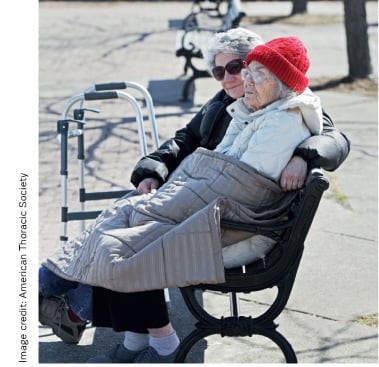ICU Management & Practice, Volume 18 - Issue 2, 2018
A comparison of hospital admissions of patients over 65 and air pollution in the USA has found an association between exposure to pollutants and admission for acute respiratory distress syndrome (ARDS). The study was presented at the annual meeting of the American Thoracic Society.
The researchers analysed data by zip code from nearly 30 million Medicare patients (65 years and over) discharged from hospitals from 2000 up to and including 2012 following a diagnosis of ARDS. Using these zip codes, the researchers computed annual average concentrations of fine particulate matter (PM2.5) and ozone concentrations. The data was used in a statistical model to make associations between air pollution levels and ARDS hospitalisations. The analysis was adjusted for differences in weather, race, socioeconomic status and smoking status.
The analysis found statistically significant associations between yearly changes in PM2.5 and yearly changes in ARDS hospitalisation rates for elderly patients. Admissions for ARDS increased when PM2.5 and ozone levels increased. In regions with lower pollution, associations between chronic exposure to PM2.5 and ozone had stronger associations compared to the entire United States.

Results
From 2000 to 2012 in the Medicare cohort, there were 1,164,784 hospital admissions for ARDS from 2000 to 2012. The analyses included 37,167 zip codes for 13 years. On average there were about three hospital admissions for ARDS within a zip code per year. Annual average PM2.5 and ozone concentrations were 11.0 μg/m^3 and 39.2 ppb, respectively. The researchers found increases of 1 μg/m^3 in annual average PM2.5 and of 1 ppb in annual average ozone were associated with increases in annual hospital admission rates for ARDS of 1% (0.97%, 95% CI: 0.88, 1.07) and 0.13% (95% CI: 0.06, 0.20), respectively.
You might also like: Rising Ozone Levels Associated with ARDS
In low pollution regions (annual average PM2.5 level less than 12 μg/m^3), the same annual increases in PM2.5 and ozone was associated with increases in annual hospital admission rates for ARDS of 1.71% (95% CI: 1.52, 1.91) and 0.30% (95% CI: 0.20, 0.39), respectively.
In a media release, lead author Jongeun Rhee, ScD, of the T. H. Chan School of Public Health, Harvard University, commented: “We highlighted the importance of air pollution as an environmental risk factor for ARDS, which has not been studied widely but contributed to a previous finding that was limited to ozone," said Dr. Rhee. She added: "Most importantly, we found increased hospital admission rates even when seniors were exposed to levels below current annual National Ambient Air Quality Standards (NAAQS) for PM2.5 (12 μg/m^3).
Dr. David Christiani, the senior author, said: “These results add to the growing body of literature on various adverse health effects at current standards that demonstrate a need to lower our exposure limits.”





